A swimmer stops short of a red algae bloom at Sydney's Clovelly Beach on November 27, 2012, which closed some beaches for swimming including Bondi Beach for a period of time. While the red algae, known as Noctiluca scintillans or sea sparkle, has no toxic effects, people are still advised to avoid swimming in areas with discoloured water because the algae, which can be high in ammonia, can cause skin irritation. (Photo by William West/AFP Photo)
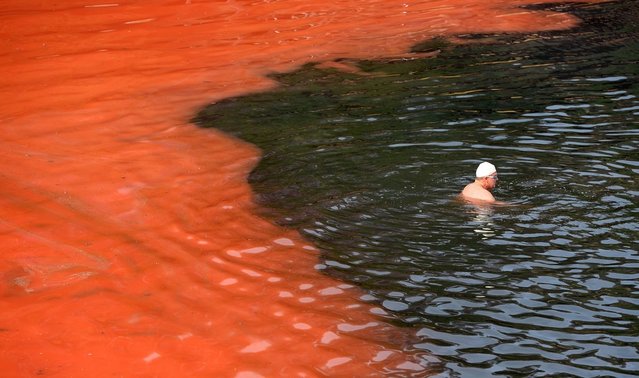
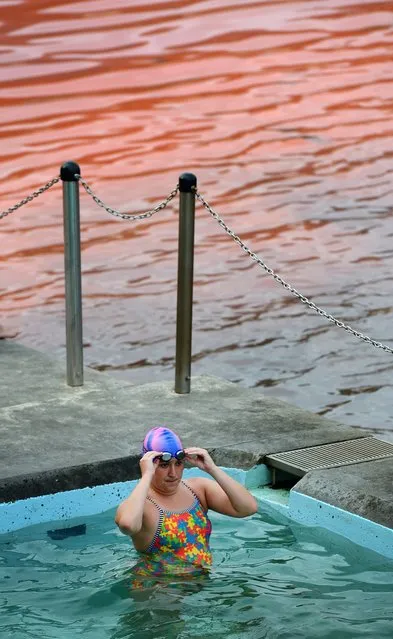

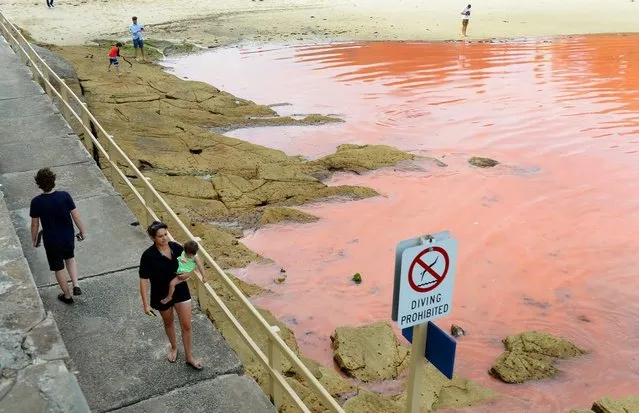
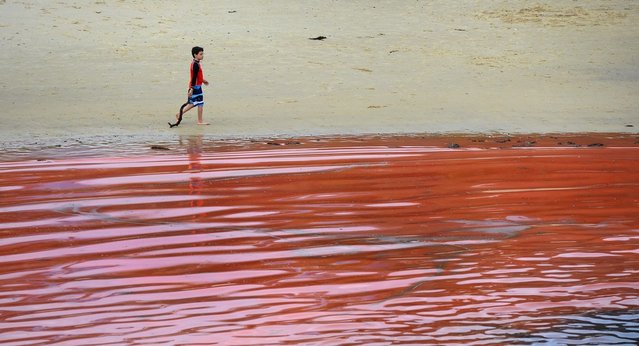
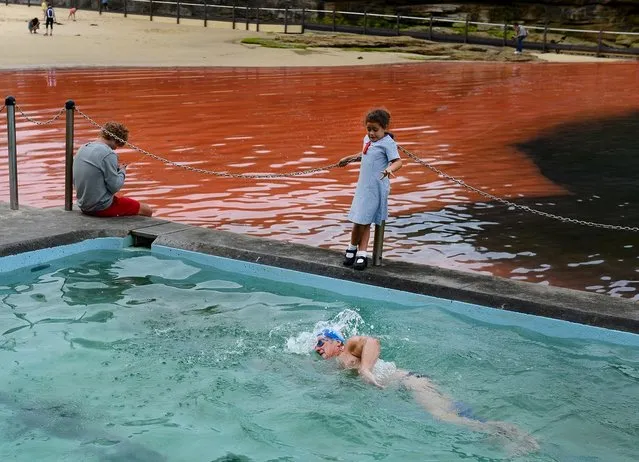
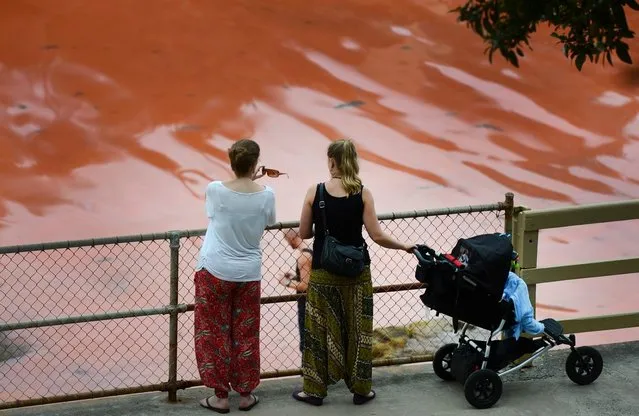
28 Nov 2012 09:52:00,
post received
0 comments
